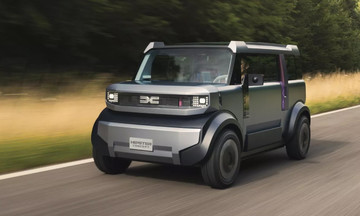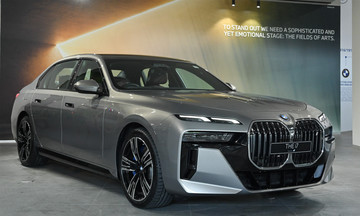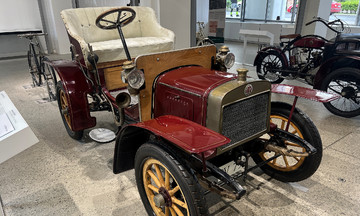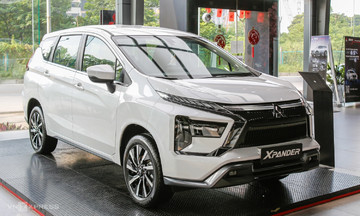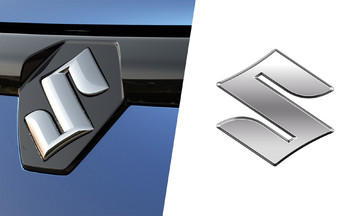A test version of the VinFast VF 8 is on display in the East Yard area of the "80 Years of Independence, Freedom, and Happiness" exhibition. Unlike commercial VF 8s, Phenikaa-X has tested autonomous driving technologies on this model, adding equipment to both the interior and exterior.
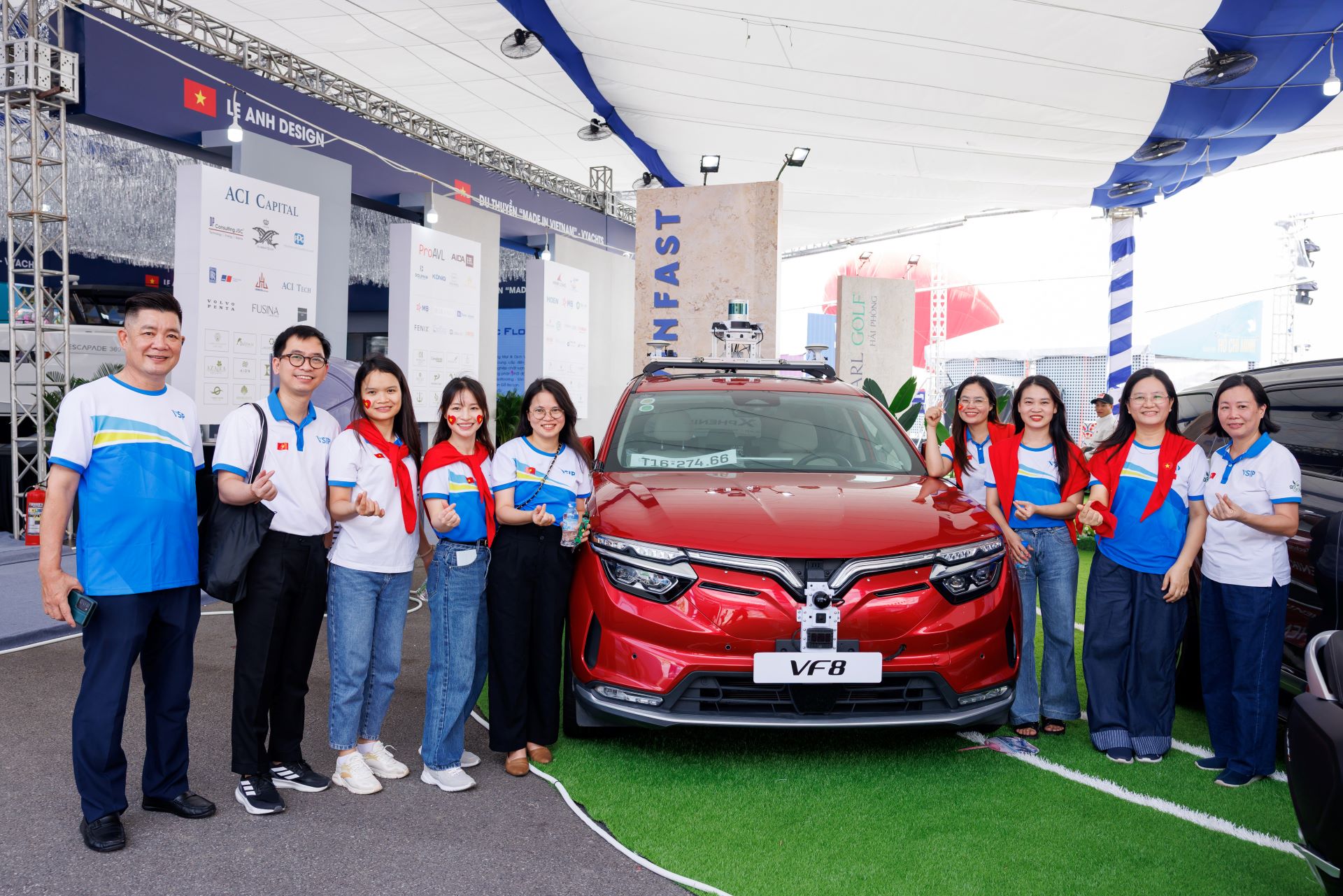 |
A VinFast VF 8 testing level 4 autonomous driving technology at the exhibition. Photo: Tuan Vu
Externally, the vehicle has additional equipment on the roof, front, rear, and sides. The interior features a large screen below the infotainment display. The trunk area also houses additional machinery. Pham Hoang Son, Phenikaa-X's project lead, stated that the VF 8 is equipped with 15 cameras, 12 LiDAR sensors, and radar. "This allows the electronic system to identify all images and obstacles 360 degrees within a 250 m radius, with centimeter-level accuracy," Son said.
According to the testing team, the red VF 8 represents the next phase of the autonomous vehicle project, developed by Vietnamese engineers, mastering level 4 autonomous driving technology. At this level, the car can drive itself completely in many situations, without driver intervention in steering, acceleration, braking, or lights. This level of autonomy is achieved by few car manufacturers worldwide. The commercial version of the VF 8 has level 2 autonomous capabilities.
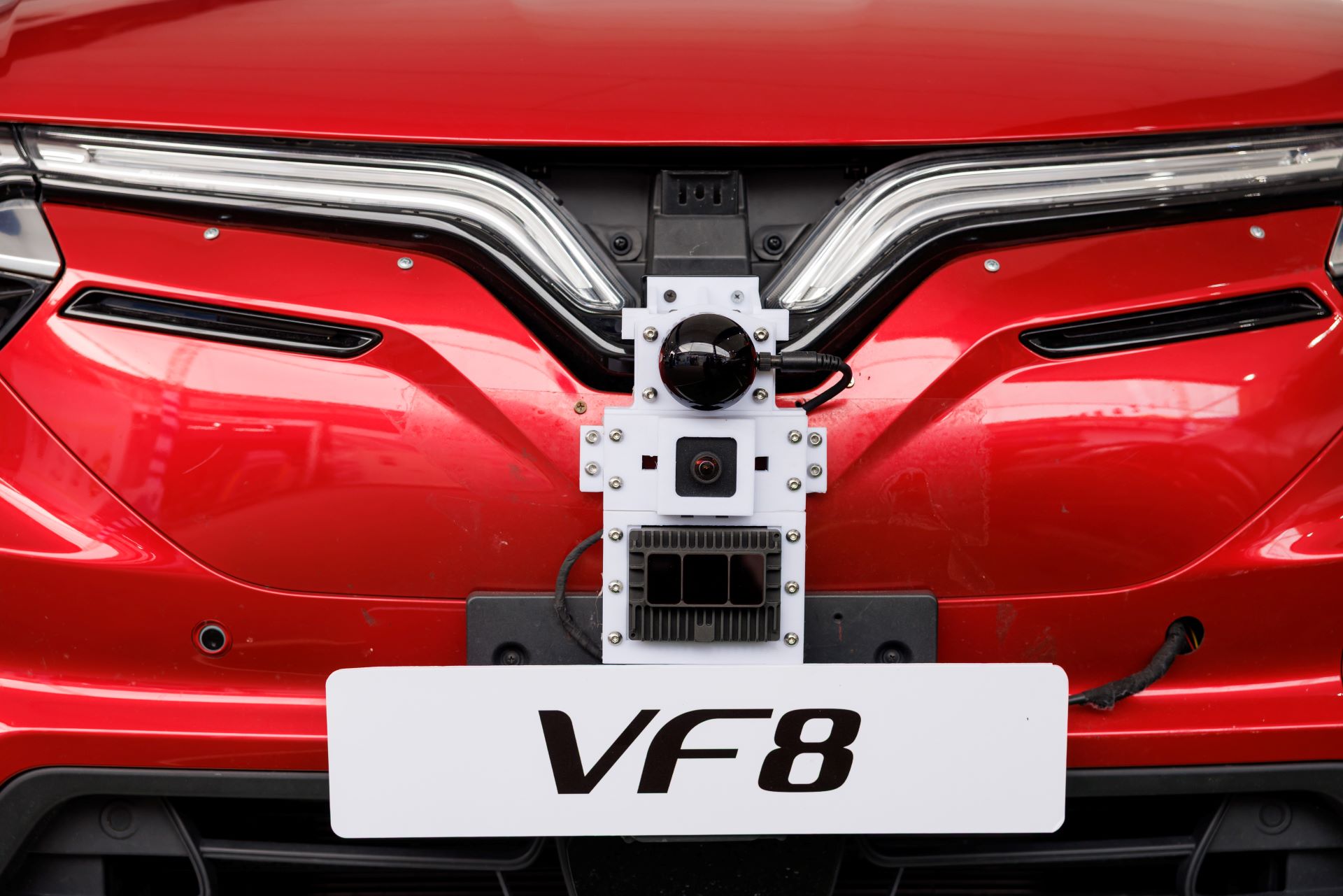 |
LiDAR sensors, radar, and cameras mounted on the front of the car. Photo: Tuan Vu
Pham Hoang Son explained that engineers provided the car with a digital map containing complete information, including current traffic laws. Under the engineers' supervision, the vehicle was tested in real-world traffic conditions. "With the data provided, the car can control its speed, stop, turn on lights, steer, and comply with traffic laws," Son said.
Previously, the Phenikaa-X team tested this technology on a South Korean car model but switched to the VF 8 in late 2024 due to the special support received from VinFast. The Vietnamese electric vehicle manufacturer provided Phenikaa-X with a brand-new VF 8 and assisted in integrating the autonomous system, creating a platform for engineers to develop on an actual vehicle. Such support is not readily available to a Vietnamese tech startup, especially when working directly with a manufacturer.
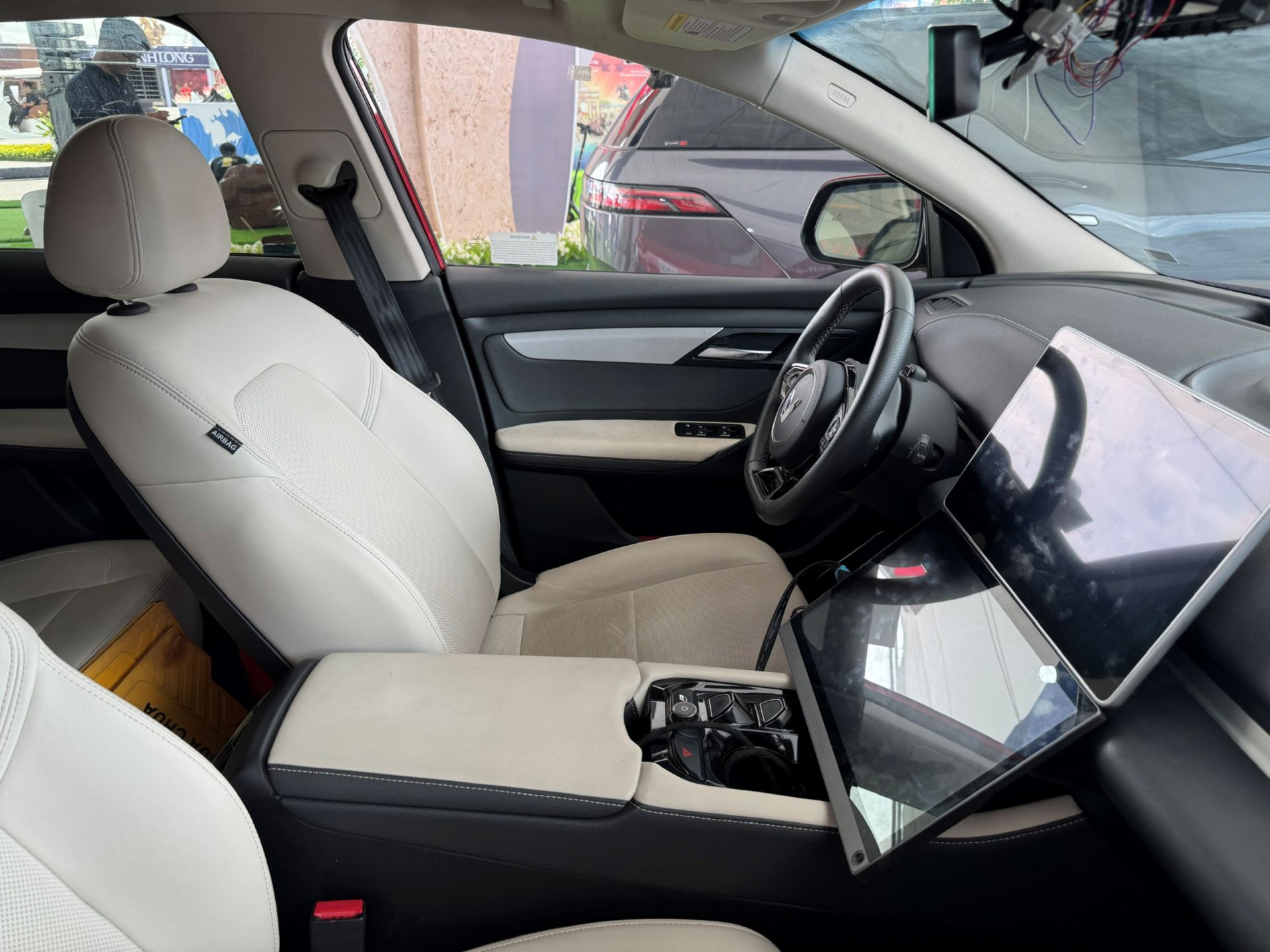 |
The interior of the VF 8 test version has an additional screen. Photo: Tuan Vu
"This is very practical support and plays a crucial role in the project. Thanks to VinFast, we have complete information about the software, structure, and technical details of the car. This allows the development team to control the entire electronic system, operation, and control, making research more convenient and practical," a Phenikaa-X representative said. "With support from Vingroup, vehicle tests are being conducted in Ocean City urban areas."
Regarding the VF 8 displayed at the exhibition, the developers stated that for autonomous driving alone, the car requires 5 LiDAR sensors and 7 cameras. However, this model is equipped with more devices to collect data, paving the way for the next phase, which will integrate AI.
Le Anh Son, Director of Phenikaa-X, noted that the global autonomous vehicle market is projected to grow from 1,500 billion USD in 2022 to 13,600 billion USD by 2030. "This is a strategic area that the US, Japan, and China are focusing on, requiring enormous investment in time, infrastructure, human resources, and finance," Son said. "With its leading role and vehicle ecosystem, VinFast will be a partner and launchpad for 'Make in Vietnam' technologies to develop and reach the world."
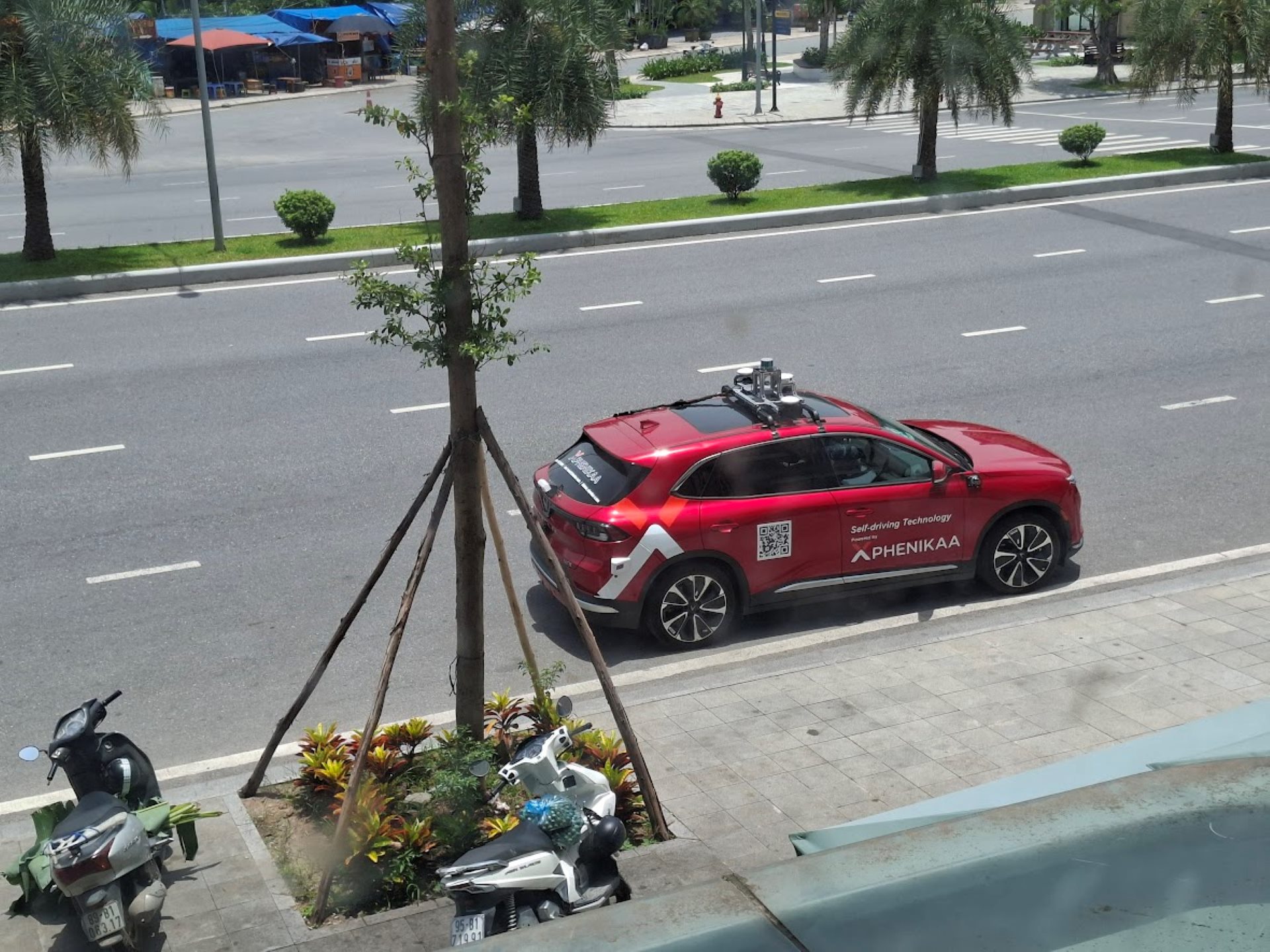 |
The VF 8 tested by Phenikaa-X. Photo: Tuan Vu
At the event, a technology expert assessed that VinFast has demonstrated its capabilities through its range of electric vehicles and its role in leading and supporting Vietnamese startups to advance on the global technology map.
Autonomous driving technology is divided into 5 levels. In levels 1-3, the driver must still intervene; level 4 is almost entirely autonomous, and level 5 is the highest, where the driver doesn't need to pay attention to the car. Currently, the global auto industry has only commercially applied levels 2 and 3; higher levels remain in the testing phase, limited to certain areas.
Quang Anh




